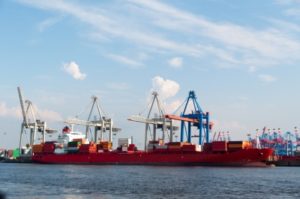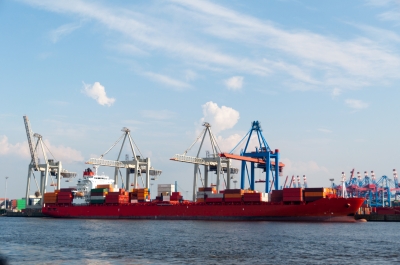 The Philippines stands to benefit from finding new ways to further cut its cost of trading goods, as this can help make it a better player in global value chains (GVCs) and become a more attractive destination for foreign direct investments (FDIs).
The Philippines stands to benefit from finding new ways to further cut its cost of trading goods, as this can help make it a better player in global value chains (GVCs) and become a more attractive destination for foreign direct investments (FDIs).
In a recent study, the APEC Policy Support Unit (PSU) said trading costs for Asia-Pacific Economic Cooperation (APEC) member economies have been on a downward path, but there are still fresh areas they can explore if they want to shave these costs even more.
Trade costs have been declining between 2010 and 2014, according to the PSU study “APEC Regional Trends Analysis, Reducing Trade Costs in the Asia-Pacific” released in May 2016. In PSU’s calculation of the average bilateral trade costs of APEC member economies with their 10 largest trading partners from 2010 to 2014, APEC trade costs in 2014 have decreased by 6% (simple average) and 12% (weighted average) between 2010 and 2014.
PSU also calculated average bilateral trade costs for APEC economies with their trading partners Canada, China, France, Germany, Italy, Japan, Korea, Mexico, the United Kingdom, and the United States, which represent a broad geographical and economic cross-section of the global trading economy. Results showed a decrease in average bilateral trade costs between APEC economies and these 10 global trading partners by 4% (simple average) to 7% (weighted average).
Philippine trade costs still high?
For the Philippines, however, trade costs have even gone up. In the 2016 World Bank’s Ease of Doing Business report, export costs in the Philippines are said to reach US$890 per container, higher than the $755 per container in the previous report. Of the total cost, WB said documentary compliance costs $53, border compliance $456, and domestic transport $381.
The cost of importing a container is also higher at $1,011 from the previous report’s $915. Of the current total, importers spend $50 on documentary compliance, $580 on border compliance, and $381 on domestic transport.
The PSU report said certain key efforts to reduce trade costs have been consistently implemented within APEC, including customs reform, harmonizing standards, and business mobility.
The first and second APEC Trade Facilitation Action Plan (TFAP I and II) from 2001-2010 attempted to reduce trade costs through a menu of actions and measures that simplify administrative and procedural requirements in four key areas: customs procedures; standards and conformance, business mobility, and e-commerce.
Using data from the WB’s Trading Across Borders indicators, PSU in 2011 found a 5% reduction in total trade transaction costs across the APEC region over the period of TFAP II, which resulted in total savings of US$58.7 billion.
Supply chain connectivity
Meanwhile, the APEC Supply-Chain Connectivity Framework Action Plan (SCFAP), which was initiated in 2010, called for an improvement in supply chain performance in time, costs, and uncertainty through relevant actions that address these chokepoints for the benefit of traders.
The report noted that the 2015 data from WB’s Ease of Doing Business showed that international trading costs have gone down in 2014 relative to 2009 baselines, with reductions in time and real costs to export and import, as a result of progress of SCFAP.
The PSU report, however, said APEC economies need to further bolster their regional cooperation in new areas—such as upgrading transport and network infrastructure, improving the regulatory environment for services, strengthening connectivity, and enhancing value chain resilience—in order to trim their trade expenses even more.
“To enhance these efforts, an end-to-end supply chain framework to view trade facilitation is necessary,” the report said. This, it said, means focusing on the common “at the border” trade facilitation efforts and facilitating efforts on improving logistics efficiency and connectivity both within and across the borders.
This also means focusing on the flows and security of finance and information in addition to the flows of goods, it added.
Benefits of lower trade costs
According to the report, lower trade cost is an enabling factor for a more efficient global production network, which affects the investment location decisions of firms.
PSU cited a 2014 working paper entitled “Impact of Trade Facilitation on Foreign Direct Investment” by Yann Duval and Chorthip Utoktham of the United Nations Economic and Social Commission for Asia and the Pacific (UNESCAP), which states that a reduction of bilateral trade costs by 12% to 14% will increase bilateral FDI flows by 16% to 20%.
“In fact, the impact of trade costs on FDI is even higher than the reduction in bilateral tariff which only affected bilateral FDI flows by 1%,” the UNESCAP paper said.
The report also noted that flourishing global value chains “have been made possible by lower trade costs.”
“Hence, lower trade costs is an enabling factor for a more efficient global production network, increasing productivity as well as influencing firms’ investment location decisions,” the report noted. – Roumina Pablo
Image courtesy of franky242 at FreeDigitalPhotos.net





